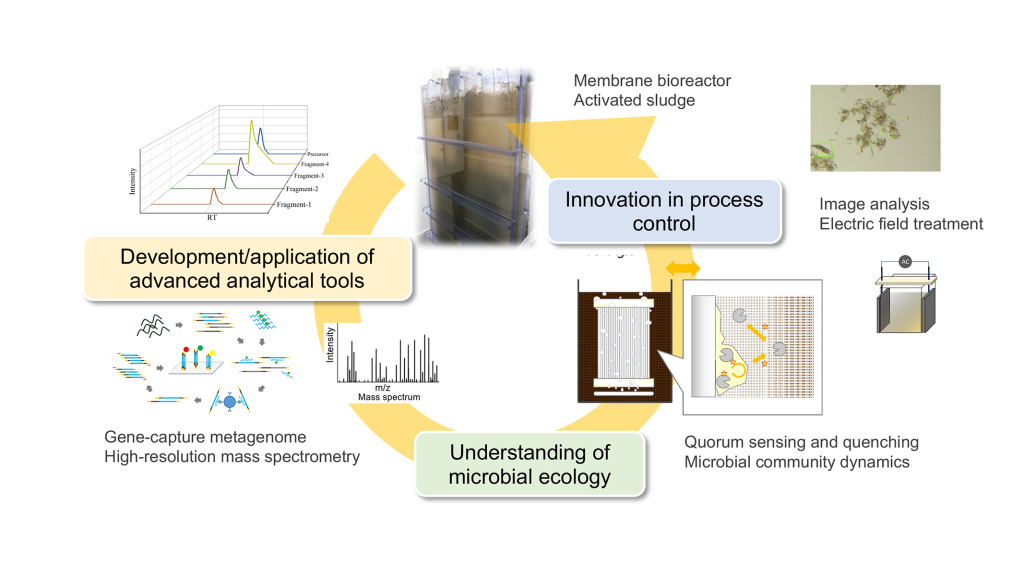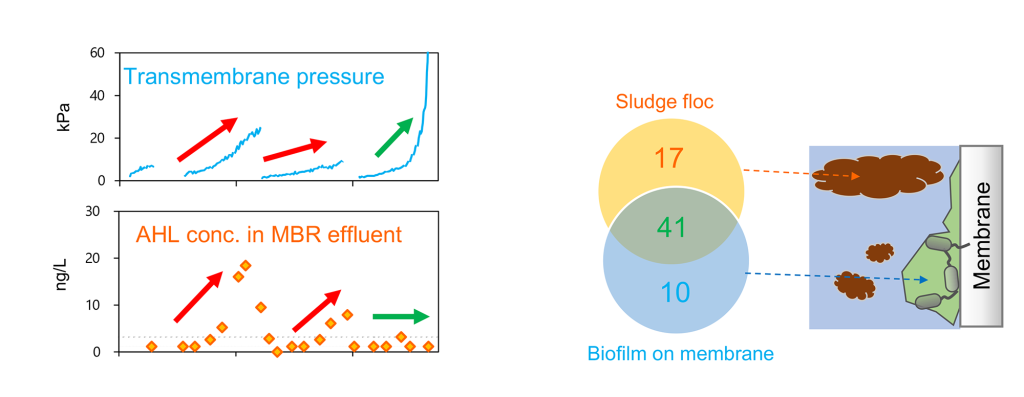Microbes play an essential role in biological wastewater treatment processes. Understanding microbial functions and their community-level traits is key to developing innovative technologies that will shape next generation wastewater treatment systems. Recent advances in analytical tools are providing us with greater abilities to better understand microbial ecology. Working at those different phases (developing/applying advanced analytical tools, understanding microbial ecology and innovating treatment process), we are investigating a means to better control wastewater treatment processes with a special focus on signaling-based microbial interactions.

Quorum sensing (QS), also referred to as microbial communication, is known as a mechanism that enables microbial cells to sense their population density using signaling compounds and orchestrate their behaviors at a population level.. It is believed that QS exists in activated sludge, a suspension of dense microbial aggregates used in biological wastewater treatment, and plays an important role in determining microbial community activities and the performance of processes. However, little is known about what kind of QS signaling compounds are present in the sludge and where, when, and how the signaling compounds become a key part of the process performance. We are conducting experiments to reveal and explore the role and diversity of QS signaling compounds present in activated sludge with the help of advanced analytical instruments and molecular tools such as high resolution mass spectrometry and metagenomics.

